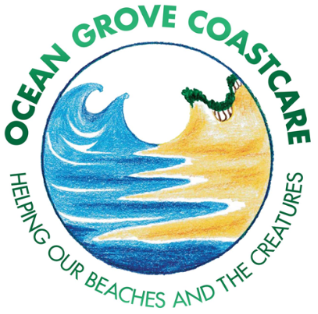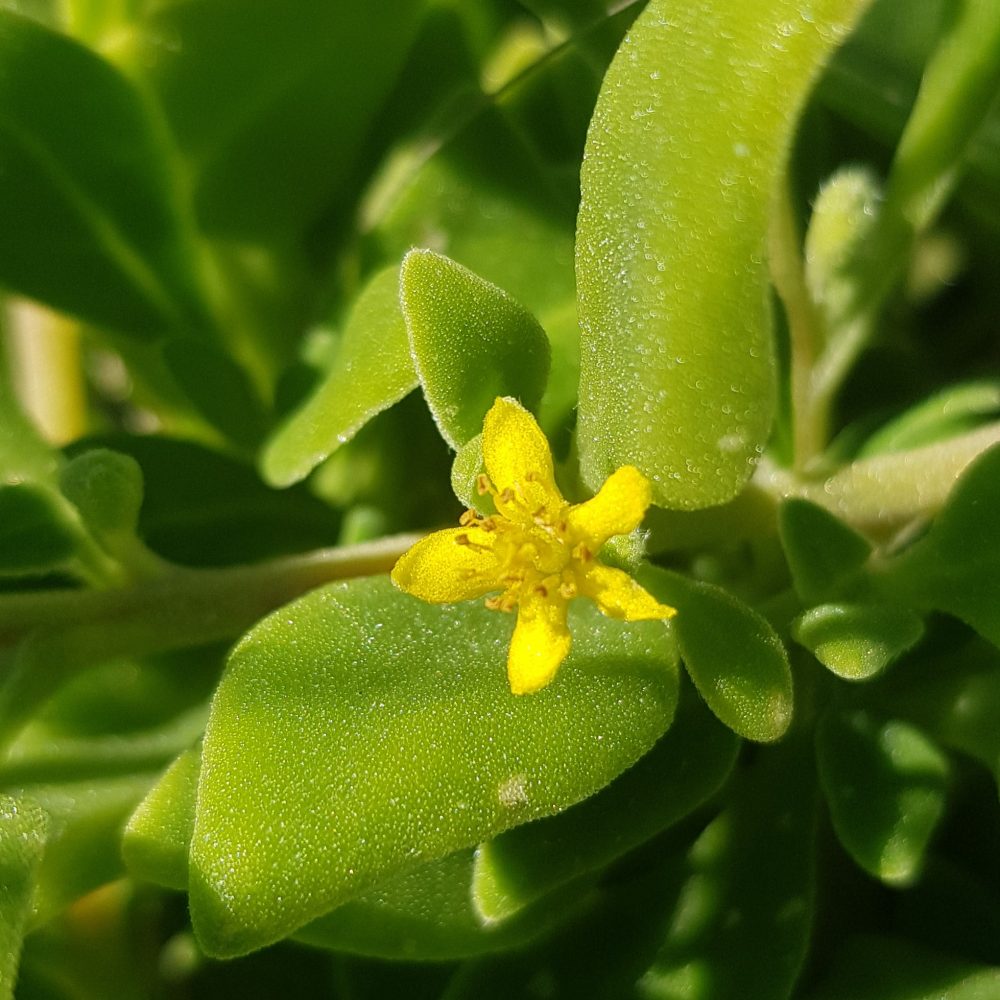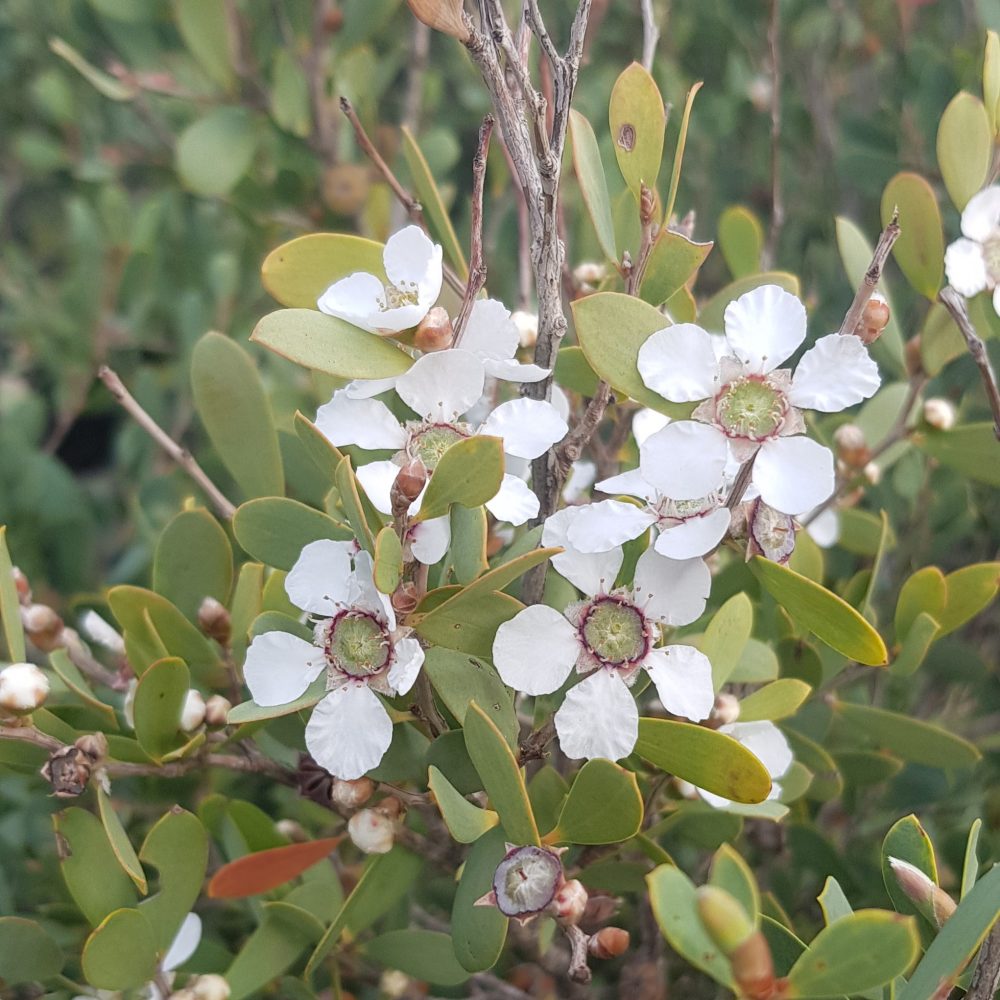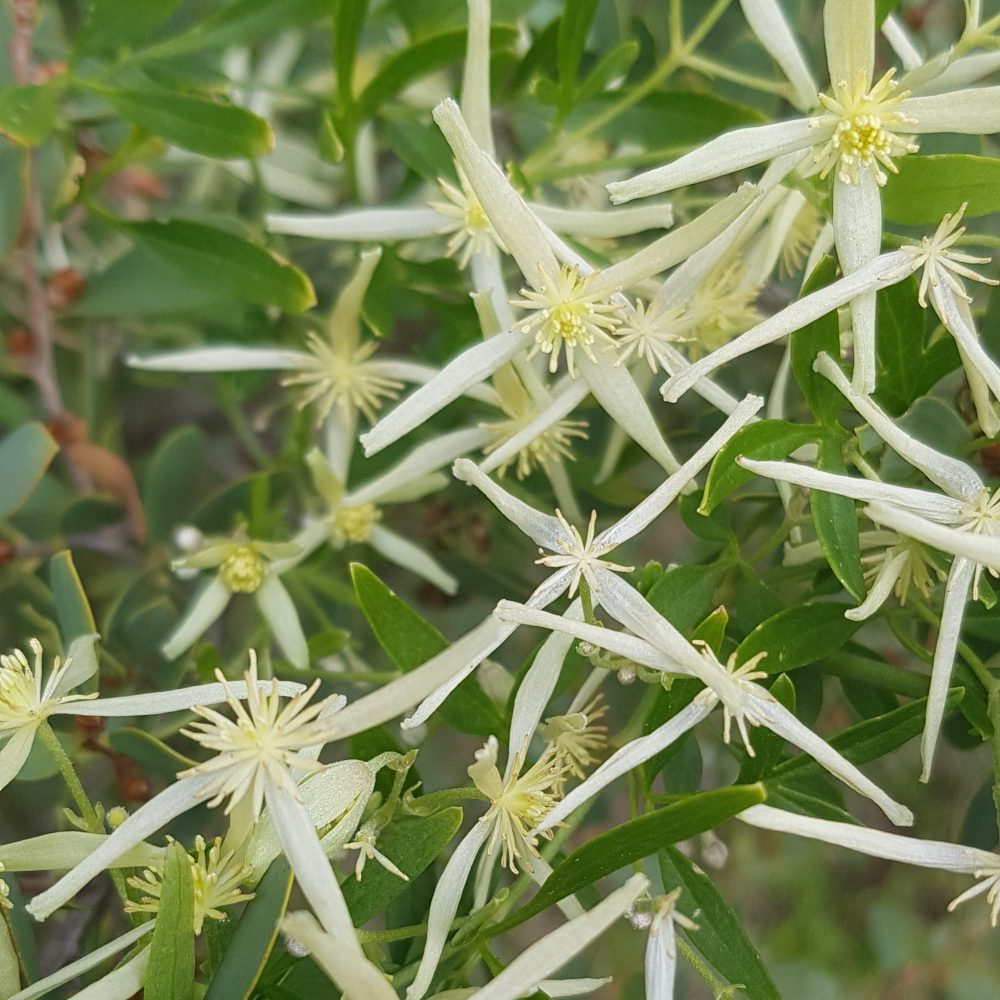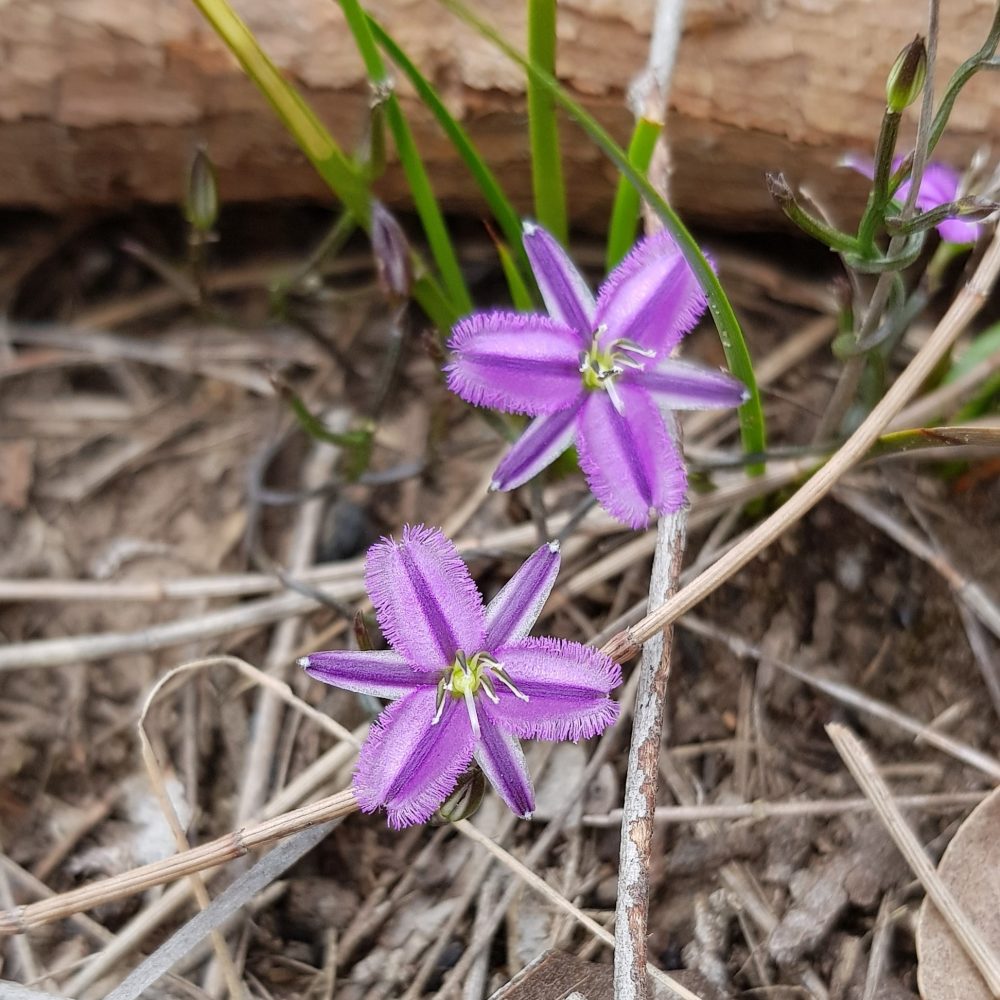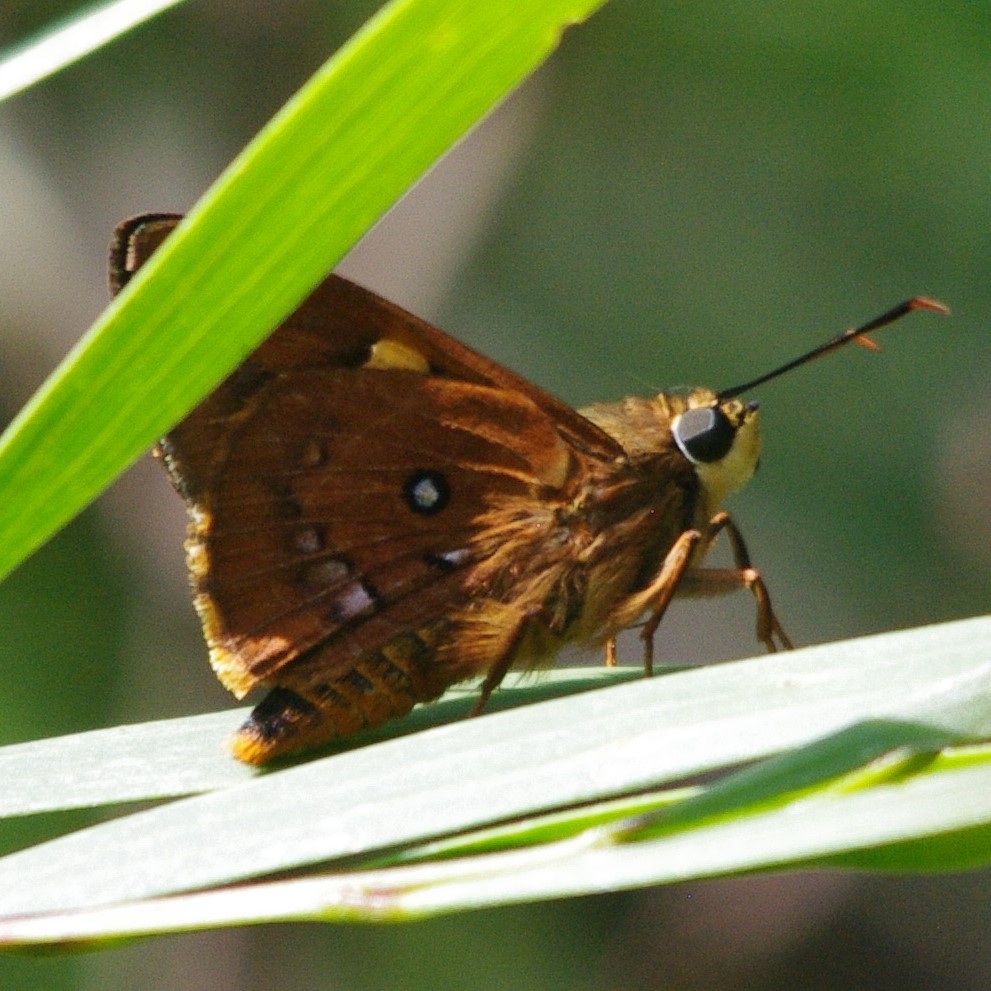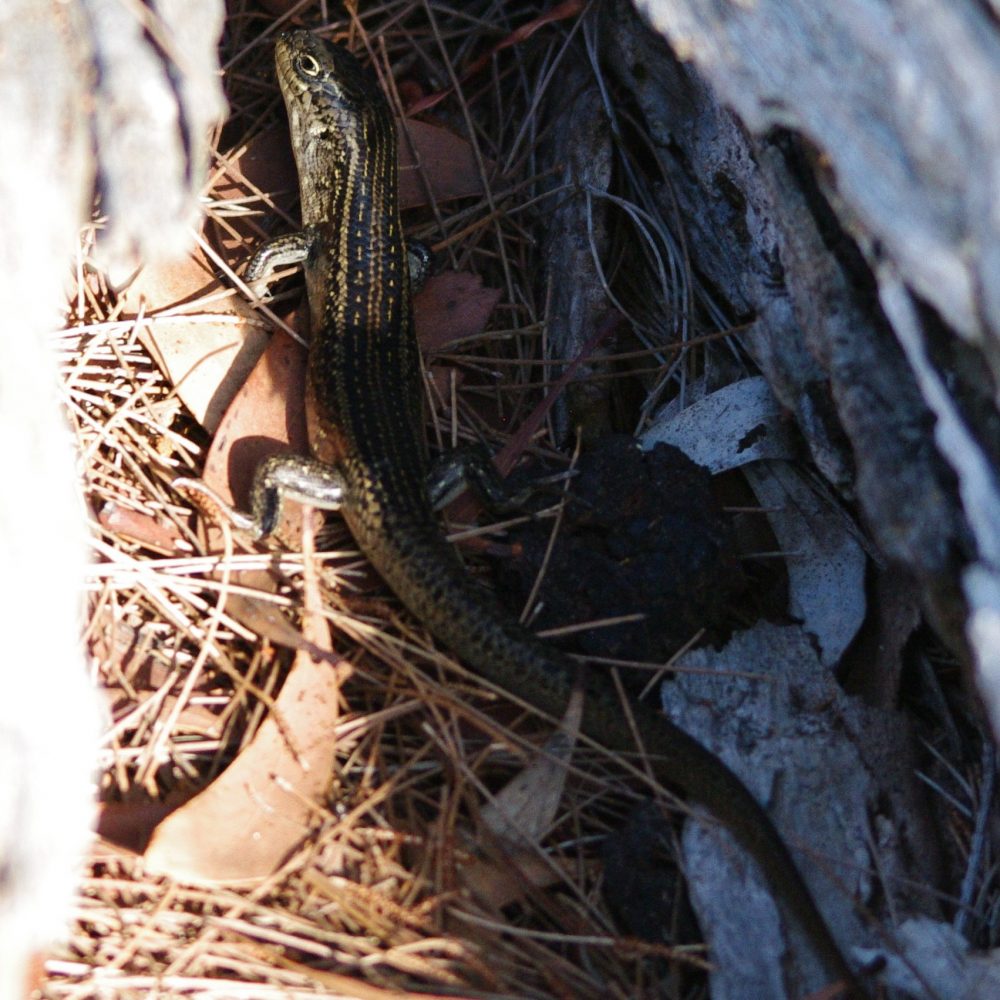Ocean Grove is home to around 18,000 people. This number swells greatly during holiday periods, particularly over summer. As well as people, Ocean Grove is also home to a vast range of plant and animal species. Like people, these species may either live, or be noticeable, in the area all year round, or visit, or be visible, only seasonally. For example some species, like migratory birds such as Swift Parrots (Lathamus discolor), Pink Robins (Petroica rodinogaster) and Grey Fantails (Rhipidura albiscarpa), are known to use Ocean Grove as a ‘launching/landing pad’ as they travel between Tasmania and mainland Australia during autumn and spring.
The diverse range of plant and animal species is largely due to the array of natural environments and habitats that can be found in Ocean Grove. These range from the submerged and inter-tidal rocky reefs located just off our beaches through to the heathy woodlands of the elevated plateau of northern Ocean Grove.
Below is a brief description of the different environments and habitats you can find in Ocean Grove, and some of the plant and animal species that call these home. To discover even more about Ocean Grove download the Discover the Real Ocean Grove guide.
Offshore and inter-tidal reefs
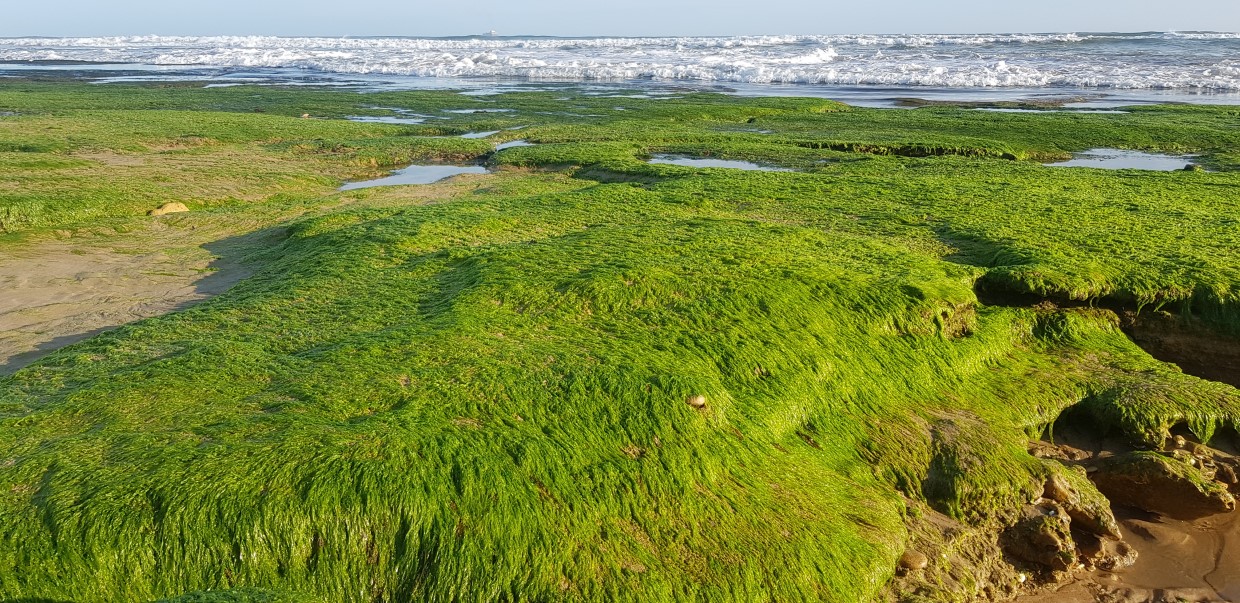
The marine environment located immediately off the Ocean Grove coast is dominated by a series of rocky shelves covered in habitat-forming organisms, such as algae (seaweed), sponges and bryozoans. This rocky habitat is part of what is known as the Great Southern Reef- the extensive network of rocky reefs found throughout the temperate waters of southern Australia. Most of us only catch a glimpse of these habitats when, at low tide, inter-tidal rocky shelves can become exposed. Here, one of the main groups of animals that can be easily viewed are the molluscs. These include: dense mats of filter-feeding mussels; herbivorous snails such as Warreners (Turbo undulatus), limpets and Striped-mouth Conniwinks (Bembicum nanum); and predatory carnivorous snails such as Dogwinkles (Dicathais orbita) and Lined Cominellas (Cominella lineolata). These inter-tidal rocky shelves are often vegetated with a range of algae species which provide food and cover for the many animals that live in these habitats. These include: various species of almost golf green-like turfing algae; slimy Sea Lettuce; and the grape-like Neptune’s Necklace.
A walk along the beach, particularly after some strong southerlies, can reveal a little more about what is living in the rocky reefs immediately off Ocean Grove. Many species of green, brown and red algae can be found, often in large rafts spread over the beach. Look closely and you may find evidence of many of the animals that frequent the off-shore habitats. These include not only the almost ubiquitous old shells of herbivorous and carnivorous snails and internal bones of cuttlefish, but perhaps also crab carapaces (shells), jellyfish, the almost plastic looking By-the-wind-sailor (a relative of jellyfish) (Velella velella) and the occasional fish such as Globefish (Diodon nicthemerus) or leatherjackets. Some unlucky marine birds, such as Little Penguins (Eudyptula minor), shearwaters and prions, can also be found beach-cast.
The Beach
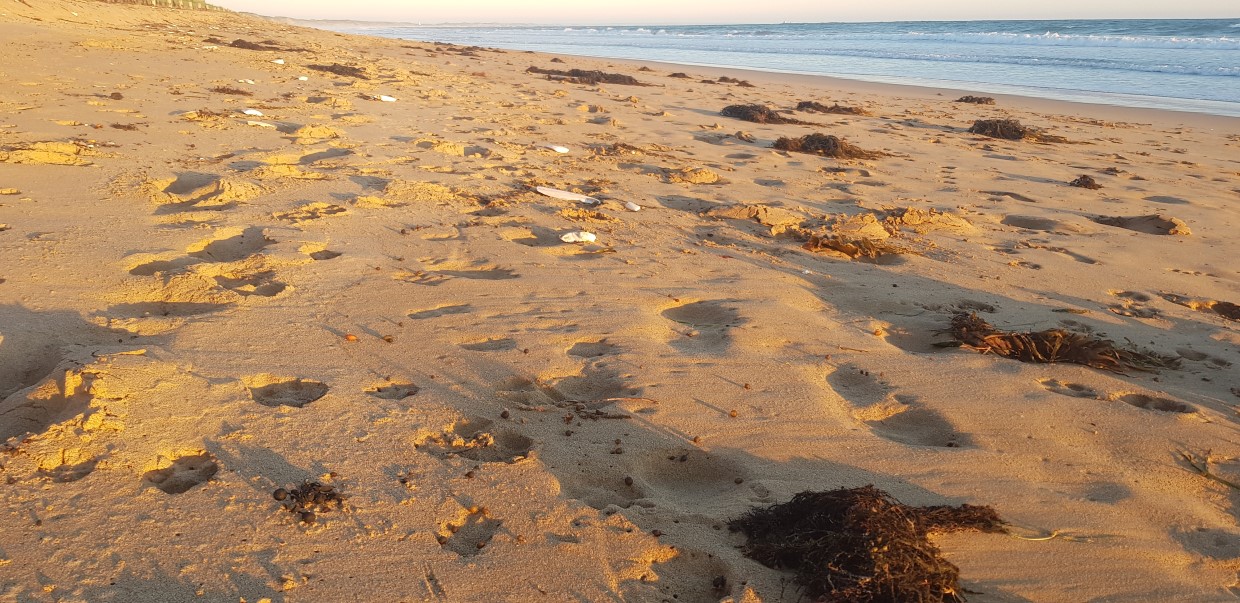
The plentiful amount of organic material that is regularly cast on to our ocean beaches provides many feeding opportunities for scavenger bird species such as Silver and Pacific Gulls (Chroicocephalus novaehollandiae and Larus pacificus), Australian Magpies (Cracticus tibicen) and Little Ravens (Corvus mellori). Although seemingly devoid of complexity as a habitat, our relatively flat and broad ocean beaches are home to perhaps Ocean Grove’s best known bird species- the Hooded Plover (Thinornis cucullatus). This small shorebird (about the same size as a blackbird), can often be seen scurrying across all levels of the beach, but particularly in the zone of retreating wave-wash where it feeds on minute marine invertebrates. The Hooded Plover nests on our Ocean Grove beaches in small depressions in the sand located only a little above the high tide line. As the eggs are perfectly camouflaged in order to blend in with the seaweed smattered sand, they are at great risk of being destroyed by unwary beachgoers. Upon hatching, the tiny chicks are immediately mobile and must venture to the waterline in order to feed. Although intently watched over by their parents, these chicks are highly vulnerable from predation and accidental trampling. It is therefore important when walking on our ocean beaches, particularly during spring and summer and particularly west of main beach and east of the 6W stairs, to walk close to the water’s edge and keep your dog on a lead.
From the beach, or from slightly higher vantage points in the dunes, you may spot coastal seabirds such as terns, gannets and cormorants foraging either above or on the waves. Look closer and you could perhaps even spot a dolphin or a whale!
The Estuary
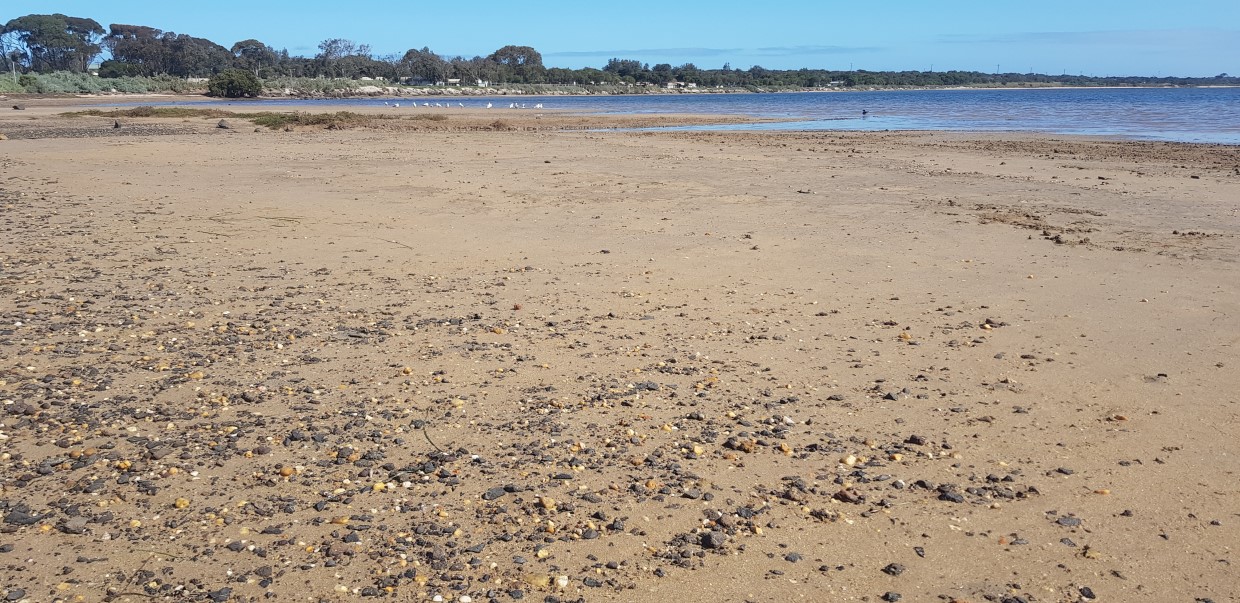
In terms of water movement, the estuary of the Barwon River is a much less violent place than the ocean beach. Sediment from further up the catchment of the river, and the high nutrient load it is carrying, is generally allowed to settle in large muddy and sandy banks. Due to this high nutrient input, these banks and the surrounding estuarine waters are highly productive and teeming with microbial and invertebrate life, which in turn, attracts larger vertebrate species.
Many fish species frequent the estuary, as attested to by the numbers of recreational fishers dotting its shores. Estuaries play a very important role in the life-cycles of fish species that may be either largely marine or freshwater in habit. These roles include as nurseries, spawning grounds, feeding grounds or vital ‘highways’. Many fish-eating bird species are attracted to the Barwon estuary and include Australian Pelican (Pelecanus conspicillatus), cormorants and terns.
Many bird species that feed upon the small organisms that live in the nutrient rich mud and sand banks can also be easily observed on the estuary. These include a range of species that migrate to the estuary from the Arctic Circle every summer, such as Common Greenshank (Trinia nebularia), Red-necked Stint (Calidris ruficollis) and Eastern Curlew (Numenius madagascariensis). This last bird is quite distinctive as it has a very large curved bill which is almost out of proportion to its body.
Where sediment has been able to settle for a long time, vegetation, such as mangroves and saltmarsh, has become established. The mangroves help hold the mud together providing a stable home for animals like Soldier Crabs (Mictyris platycheles), and plenty of cover for our native water rat, the Rakali (Hydromys chrysogaster). The saltmarsh of Ocean Grove is also home for a number of invertebrate and vertebrate species, and can be a winter feeding ground for one Australia’s rarest and most endangered bird species- the Orange-bellied Parrot (Neophema chrysogaster).
The sand dunes that line Ocean Grove’s ocean coast not only form a physical barrier between the township and the pounding waves of Bass Strait but provides a corridor of movement and refuge for many plant and animal species.
On the exposed ocean side of the dunes, the vegetation is low and stunted, and generally low in species diversity. As the dunes become more sheltered, the vegetation develops different levels (e.g. upper, middle and lower) and generally becomes more diverse.
This vegetation community is known as Coastal Moonah Woodland and is listed as threatened in Victoria under the Flora and Fauna Guarantee Act 1988. A key species in this community is Moonah (Melaleuca lanceolata) which, along with Coast Tea-tree (Leptospermum laevigatum) and Coast Beard-heath (Leucopogon parviflorus), is the dominant ‘tree’ species in the dunes. Beneath this upper vegetation layer can be a range of shrub species, such as Seaberry Saltbush (Rhagodia candolleana) and Coast Daisy-bush (Olearia axillaris), from which may hang scrambling climber species such as Bower Spinach (Tetragonia implexicoma) and Small-leaved Clematis (Clematis microphylla).
The vegetation in Coastal Moonah Woodland can become quite dense and, when combined with fallen timber and a surprisingly steep and gullied topography, can make the dunes quite difficult to move through. In some more open patches, the ground story of Coastal Moonah Woodland can become quite diverse including species such as the purple-flowering Coast Swainson-pea (Swainsona lessertiifolia), the red-flowering Running Postman (Kennedia prostrata) and the almost lawn-forming Kidney-weed (Dichondra repens).
Due to the structural and species diversity of Coastal Moonah Woodland, a wide range of mammals, birds, reptiles and invertebrates can be found living here. Next time you’re on one of the dune walking trails keep an eye out for: the dreys (bulky nests made out of sticks and leaves) of Common Ringtail Possums (Pseudocheirus peregrinus) in the branches of the taller trees and shrubs; Blotched Blue-tongued Lizards (Tiliqua nigrolutea) soaking up some sun; Barred Skipper Butterflies (Dispar compacta) feeding from the flowers of the Coast Daisy-bush; and White-browed Scrubwrens (Sericornis frontalis) angrily chiding you for walking past.
Wetlands
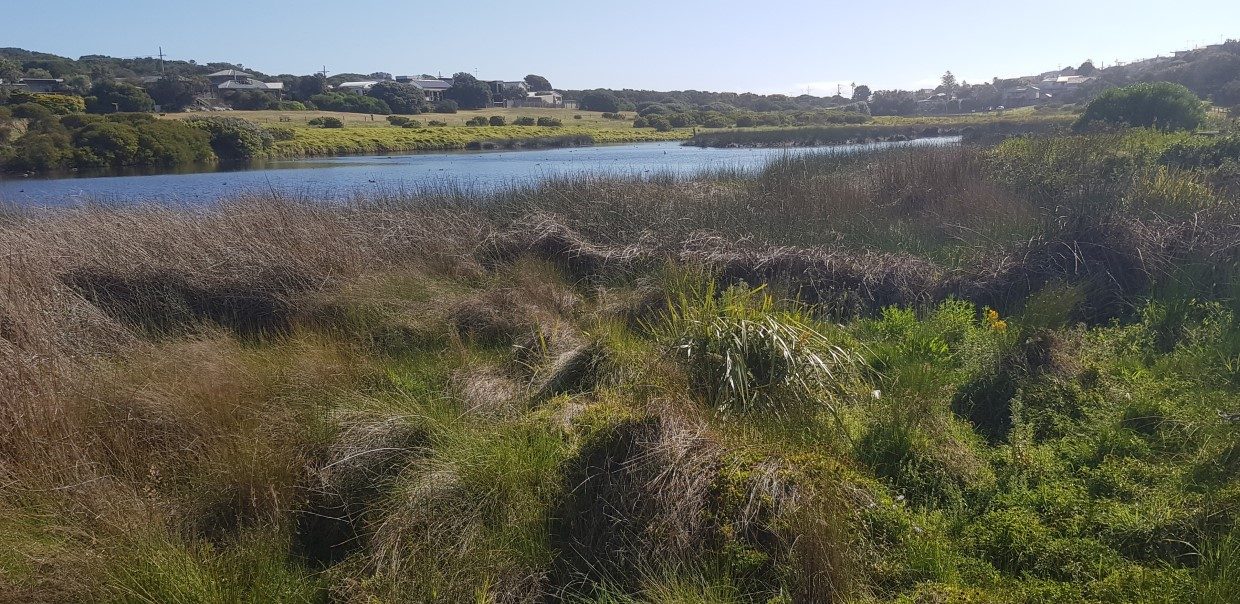
The natural swale between the dunes and higher plateau of Ocean Grove would have once been a vast complex of wetlands and damp scrubs. Nowadays, the existing wetlands of Ocean Grove have been highly modified by drainage diversions or have been artificially constructed along existing drainage lines. All of Ocean Grove’s wetlands receive the bulk of their water from stormwater run-off from our streets. This means a high amount of litter and petroleum based products are washed into our wetlands. This has not affected, superficially at least, these wetlands’ ability to provide a home for a wide range of plants and animals.
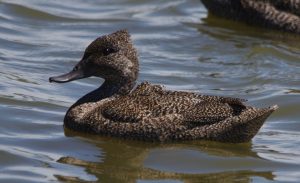 Begola and Bonnyvale Wetlands are what remains of the once vast swamps that were situated behind the dunes at Ocean Grove. The vegetation at these wetlands range from tall sedge and rush species that grow in deep water, such as Cumbungi (Typha orientalis) and River Club-rush (Schoenoplectus tabernaemontani), to lower yet dense growing herbs that grow in muddy or shallow meadows, such as Slender Knotweed (Persicaria decipiens) and Swamp Crassula (Crassula helmsii).
Begola and Bonnyvale Wetlands are what remains of the once vast swamps that were situated behind the dunes at Ocean Grove. The vegetation at these wetlands range from tall sedge and rush species that grow in deep water, such as Cumbungi (Typha orientalis) and River Club-rush (Schoenoplectus tabernaemontani), to lower yet dense growing herbs that grow in muddy or shallow meadows, such as Slender Knotweed (Persicaria decipiens) and Swamp Crassula (Crassula helmsii).
Most of the other wetlands in Ocean Grove have been artificially constructed and planted out with local species. Depending on the depth and design of the wetlands, vegetation and habitats at these wetlands may range from dense tall reeds to deep open water to low herbage or to over-hanging tall trees.
Despite their seemingly humble conditions, Ocean Grove’s wetlands are home to a vast range of animal species. The frog chorus at a number of the our wetlands can be almost deafening times, particularly when Eastern Banjo Frog (Limnodynastes dumerilii) hit their peak calling period in spring. Because of the abundance of frogs, snakes can also be quite common at our wetlands, particularly Lowland Copperheads (Austrelaps superbus).
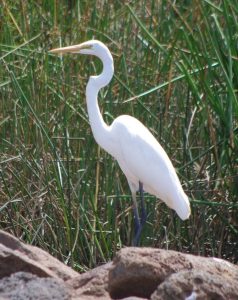 The wetlands of Ocean Grove are home, both permanently or temporarily, to an extensive range of bird species, some of which are regarded as rare and threatened. Most notable of these perhaps, is the Freckled Duck (Stictonetta naevosa). This species is regarded as one of the rarest ducks in the world and is listed as endangered in Victoria. Dozens of Freckled Duck are regularly observed at Begola Wetlands and Blue Waters Lake, although no breeding has been recorded. Other bird species that are listed in Victoria as threatened that commonly frequent the wetlands of Ocean Grove include Hardhead (Aythya australis), Nankeen Night Heron (Nyctocorax caledonicus), Royal Spoonbill (Platelea regia) and Great Egret (Ardea alba).
The wetlands of Ocean Grove are home, both permanently or temporarily, to an extensive range of bird species, some of which are regarded as rare and threatened. Most notable of these perhaps, is the Freckled Duck (Stictonetta naevosa). This species is regarded as one of the rarest ducks in the world and is listed as endangered in Victoria. Dozens of Freckled Duck are regularly observed at Begola Wetlands and Blue Waters Lake, although no breeding has been recorded. Other bird species that are listed in Victoria as threatened that commonly frequent the wetlands of Ocean Grove include Hardhead (Aythya australis), Nankeen Night Heron (Nyctocorax caledonicus), Royal Spoonbill (Platelea regia) and Great Egret (Ardea alba).
Woodlands
The largest expanses of woodland remaining in Ocean Grove can be found at Kingston Park and some nearby properties, and at Ocean Grove Nature Reserve and the adjoining Woodlands and Yellow Gums estates. Other parts of Ocean Grove, where tall trees and native shrubs exist in people’s gardens or small parks, could also be considered as providing at least a partial woodland habitat.
Where most intact, Ocean Grove’s woodlands are highly diverse in plants and animal species. The dominant tree species in our woodlands are either Drooping and Black Sheoak (Allocasuarina verticillata and A. littoralis), and Coastal Manna and Bellarine Yellow Gum (Eucalyptus pryoriana and E. leucoxylon ssp. bellarinensis). This last species is only found on the Bellarine Peninsula and some parts of Torquay. Swift Parrots, a migratory bird species, relies heavily upon the nectar from the Bellarine Yellow Gum as it passes through Ocean Grove on its way to and from Tasmania.
The mid-storey of our woodlands can vary greatly. Some areas can be dense with thickets of prickly shrubs such as Hedge Wattle (Acacia paradoxa). In other areas it may be more open and feature shrubs like the butterfly attracting Sweet Bursaria (Bursaria spinosa) or the lower growing Erect Guinea-flower (Hibbertia riparia). In some areas of our woodlands there may be no discernible mid-storey at all. One highly distinctive mid-storey plant is the Austral Grass-tree (Xanthorrhoea australis). Despite being called grass-trees, they are actually more closely related to lilies. Their flower spikes can be up to 3m high and are covered small white flowers that are very popular amongst nectar feeding birds, insects and mammals.
The ground storey of our woodlands can be highly diverse. A careful examination of the floor of the Ocean Grove woodlands can reveal (especially during spring) a vast array of orchids, lilies, sundews, herbs such as Blue Pincushion (Brunonia australis), scrambling groundcovers such as Common Flat-pea (Platylobium obtusangulam) and a plethora of native grasses.
Our woodlands are home to an excellent range of animal species. These include mammals such as the Short-beaked Echidna (Tachyglossus aculeatus), reptiles such as White’s Skink (Liopholis whitii) and Jacky Lizard (Amphibulurus muricatus) and many dozens of species of bird. From spring through to autumn, the Ocean Grove woodlands can be an excellent place to observe butterflies. These can include Yellow Admirals (Vanessa itea), Marbled Xenicas (Geitoeura klugii), Splendid Ochres (Trapezites symmomus) and Common Browns (Heteronympha merope). This last species can mass in quite large numbers.
